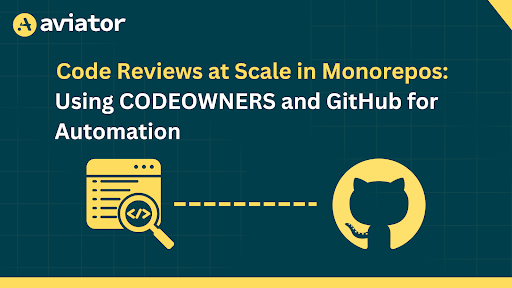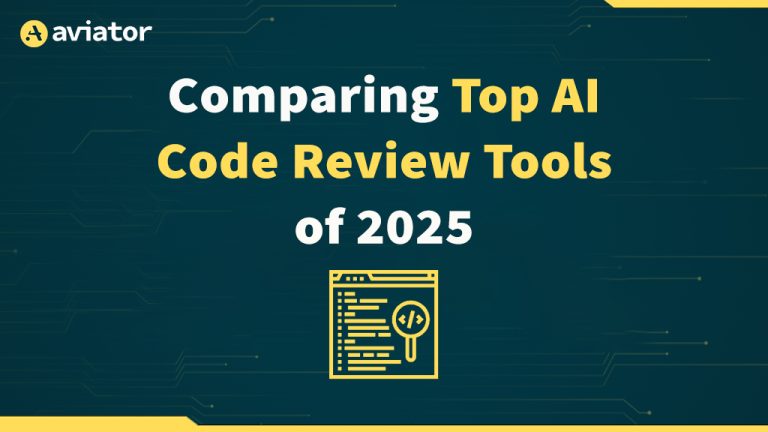The Anatomy of Slow Code Reviews
Improving the code review process is more than just enhancing the technical aspects or speeding up the timeline.

What causes code reviews to slow down? Here are some of the most common reasons and techniques for speeding things up.
Almost every software developer complains about slow code reviews, but sometimes, it can be hard to understand what’s causing them. It could sometimes be because the right owners were not identified, but many times, it could be due to a lack of communication. In this post, we will explore what can cause code reviews to slow down and learn about techniques for improving them.
Code Review Time
Total code review time can be defined as the time between sending a review request and getting approval from all the required reviewers. This process can quickly develop bottlenecks in most companies where inter-team code reviews are common.
To understand what’s causing bottlenecks, here are some questions worth asking:
- Do we have too many reviewers for each change?
- Do we have overly strict review guidelines?
- Are the code changes too big to review?
- Are there too many back-and-forth iterations?
- Are reviewers taking a long time to provide feedback?
- Are authors taking a long time to implement feedback?
- Are reviewers often out of the office or in different time zones?
When considering these questions and the corresponding answers, it’s clear that many code review challenges are social or cultural.
The Social Aspects
Incentives
In a typical engineering environment, there are no incentives to prioritize code reviews. One exception to this may be if the reviewer is also responsible for the timely launch of a product or feature associated with the code review.
In cases where there are no incentives, it makes sense for a developer to prioritize finishing their work over reviewing others’ changes.
A question worth asking: Is there a way to account for code review efforts in the performance cycle?
Review Styles
Code reviews are inherently subjective. Every developer, shaped by their experiences and preferences, approaches reviews differently. Some may focus on the nitty-gritty details of syntax and style, while others prioritize architectural decisions and code efficiency. Although these variations bring a well-rounded perspective to the codebase, they can also slow down the review process.
A question worth asking: Are code review guidelines well-defined and documented?
Ownership
While well-defined ownership is essential for maintaining quality and accountability, it can also introduce hurdles in the review process. If ownership is too fine-grained, a small set of developers receiving a large set of reviews may create a bottleneck. Identifying the right reviewer to provide good feedback may be difficult if it needs to be more coarse.
A question worth asking: How many directories or repositories have three or fewer reviewers?
What to Improve
Knowing what to improve is more important than learning how to improve. Unlike CI/CD system performance, code review performance depends on people — not machines. Therefore, instead of looking at “code review time” as a whole, breaking it down into distinct areas where you can make improvements — keeping in mind the social and cultural aspects of the process — can help you optimize code review times.
Code Complexity
Code complexity can be challenging to measure. A more scientific metric is cyclomatic complexity, introduced by Thomas J. McCabe in 1976. It measures the number of linearly independent paths through a program’s source code. However, from a code review standpoint, the most important thing to consider is whether the code is easy to understand—or its “reviewability.”
To simplify, we can use some proxies to define code complexity:
- Lines of change: Having fewer lines of code to review correlates directly with reviewing ease.
- Number of references: That is, the number of places where we use the methods or services that are being modified.
- Over-engineering: Are you trying to make code too generic or building for a distant future scenario? This may also be hard to determine and require more judgment from the reviewers.
Iteration Time
If code review is a turn-based exchange of feedback between the code change author and the reviewers, then “iteration time” can be defined as how long it takes for each exchange to reach a satisfactory conclusion.
In a code review process, it’s hard to know beforehand how many iterations it will take before the change is ready to be merged. However, reducing the time for each iteration can improve the overall time for code review.
Here’s why iteration time is essential:
- Accelerated feedback loop: The quicker the turnaround time, the faster developers can address issues, iterate on improvements, and merge their code into the main codebase.
- Improve developer experience: When developers experience swift and constructive feedback during code reviews, they feel empowered to do their best work. This satisfaction boosts individual morale and increases retention rates and overall team cohesion.
- Stay context-aware: When it takes a long time to respond to a code review, the author and the reviewer may lose some of the change’s context and background. This can have severe implications and cause defects.
- Encourage good behavior: Slow code reviews discourage developers from going the extra mile and performing refactors or code cleanups — because that would add more time to the approval process.
What Not To Improve (Directly)?
Lead Time for Changes
One of the key DORA metrics is “lead time for changes.” It measures the time from code commit to code deployment, and a shorter lead time is generally associated with better software delivery performance. Along with the CI and CD processes, code reviews play a significant role in improving this metric.
It’s tempting to focus on reducing the total time for code approval. However, enforcing strict timelines for approving a code change is unrealistic and might force reviewers to approve the PR prematurely to meet the standards.
On the contrary, most complaints about slow code reviews can be resolved by benchmarking and improving review response times. Google’s code review policy also emphasizes response time as a critical indicator:
It’s even more important for individual responses to come quickly than for the process to happen rapidly.
Test Coverage Percentage
Although it’s a standard way of measuring code health, test coverage percentage as an absolute number could be a better metric. High test coverage can give a false sense of security, implying the software is well-tested and bug-free. And it provides diminishing returns — as test coverage increases, the effort to cover the last few lines of code can be disproportionately high compared with the benefits.
Actual test effectiveness takes a lot of work to measure. Effective testing requires thoughtful consideration of edge cases, failure modes, and user scenarios not captured by coverage metrics.
How to Improve

Review SLO
A service level objective (SLO) for code review can be defined as the suggested amount of time the reviewer should take to respond to a code change. Note that this is not the time it takes for a PR to be approved; instead, it’s just the time it takes to get a response.
Consider the code review SLO as an agreement between the author and the reviewer for a pull request. With this agreement, the author is incentivized to create PRs that fall within the bounds of the SLO agreement, and reviewers are incentivized to stay on top of the PRs.
Gigantic Code Reviews
But wait a second — not all code reviews are the same! How can we expect someone to review an entire 1,000-line change and a two-line change simultaneously? It’s essential to be realistic when benchmarking the iteration time. The best benchmark must take into account the size of the review. For instance, a good default could be “code changes with less than 200 lines require a response in one business day.”
In that case, anything over 200 lines of change can be left out. This would also encourage developers to prepare more minor changes that are easier to review.
Cross-Team Reviews
Software engineering is a team-based activity. It’s common for developers working in the same team to respond faster to one another’s code reviews because they’ve already built a social contract. Therefore, benchmarking inter-team and intra-team reviews differently can also be valuable.
Other Considerations
- Business days: To get meaningful data, track working days and account for company and regional holidays.
- Time zones: Similarly, understanding time zones can be helpful when measuring response times. For instance, if you’re in California and your code reviewer is in Australia, and you send the code for review at 10:00 a.m. on a Friday, expect the reviewer’s reply on Monday morning.
Improving the Review SLO
- Prioritize code reviews: Encourage the team to consider code reviews an integral part of the development process, not an afterthought.
- Schedule time for reviews: Team members should block off specific times during the workday for code reviews. This ensures that reviews are done promptly and that feedback is provided to the developer as quickly as possible.
- Use tools to speed up feedback: Implement tools to help automate some aspects of the code review process, like flagging potential issues. These tools can help identify issues in the code that may take a human reviewer longer to spot.
- Regularly monitor and adjust SLOs: This ensures the team always aims for a realistic target in their code review process.

Revision SLO
Similar to a review SLO, a revision SLO can be defined as the suggested amount of time the author of a code change should take to respond after the reviewer has left comments or approved the code change.
Rewrites
In many cases, the revision SLO should be very brief — for instance, if the reviewer’s feedback is minimal or if the author is responding to the reviewer with clarifications. However, in some cases, the reviewer’s feedback may require a significant rewrite or introduce a dependency on another change.
In such cases, recalling the code review request might make sense and submitting it again once the changes are implemented. This strategy reduces the cognitive load for the author and the reviewer, especially if SLOs are well-defined.
Conclusion
Improving the code review process is more than just enhancing the technical aspects or speeding up the timeline. It requires a balanced approach that considers the human element.
The implementation of review and revision service level objectives (SLOs) tailored to the nature of the code review, the introduction of efficient tools, and the establishment of a culture that values and prioritizes code reviews as an integral part of the development lifecycle stand out as effective strategies. Moreover, fostering a culture that encourages minor, more manageable changes and acknowledges the importance of cross-team reviews can lead to significant improvements.
This was originally posted on The New Stack









